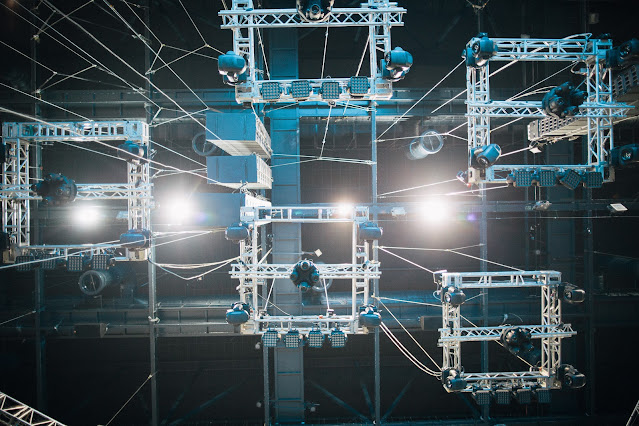Conveying emotions through appropriate lighting enhances any live performance and gives visual direction and shape to the environment. Everything from a tense scene to a joyful one is articulated perfectly through the art of theatre lighting systems. The human brain gets attracted to well-lit places as it looks intriguing to our eyes. Theatre lighting plays with lighting equipment to create attractive visuals. The art of stage lighting is unique. Lighting creates an inspiring ambience and makes any event memorable. In this post, we’ll cover everything you need to know about stage lighting along with a list of Stage Lighting Equipment list.
Stage lighting design typically involves a variety of lighting fixtures. Most stage lighting setups will include more than one type of lantern since they are designed for a specific purpose. Here is an extensive stag lighting equipment list:
An ellipsoidal spotlight is usually used as front lighting as it produces a drastic and well-defined beam of light. Focus can be adjusted with soft or sharp lines, the lighting can be adjusted with shutters, and the light can be kept from bleeding into areas that you do not wish to be lit. With these lights, you can create patterns and colours with gobos and gels.
If you’ve attended a play, you might have seen how a spotlight plays a crucial role in creating a dramatic effect when it follows the performer moving around on stage. These lights are operated manually and follow the path of a performer in real-time. The operator sometimes plays around with the positioning and intensity level of the followspot to give extra character to the scene. The colours can also be adjusted as it usually has built-in panels inside.
Taking its name from its inventor Augustin Fresnel, these lights give a unique effect because the lens is made of concentric rings. It is unique because of the mechanism. The light starts as brightest at the centre and gets softer around the edges. Though, good for washes, shutters and patterns cannot be used on these lights. They are also used to create more narrow rays of light with a faint edge.
Parabolic aluminized reflectors (PAR) are an essential part of stage lighting. PAR lamps are sealed-beam lamps contained in cylindrical metal housings. Sharing similarities with vehicle headlights, these are simple in design and a variety of options from standard and LED can be chosen. There is no option to choose focus or zoom however, vertical and horizontal beams can be created with them, along with gels to create coloured lights.
Due to the absence of any lenses, floodlights are determined solely by the reflector and lamp style. The operator can tilt a floodlight vertically or horizontally by moving the enormous fixture. Floodlights with symmetrical light distribution have the same amount of light above and below the horizontal axis. On the other hand, Floodlights with asymmetrical light spread light in one direction much further than in the other. Floodlights cannot be programmed or adjusted, nor can they be used in conjunction with fashion-forward accessories such as colour gels and diffusion.
Get a range of premium quality traditional and LED lighting and stage lighting system here. Feel free to contact us for any further assistance

Comments
Post a Comment